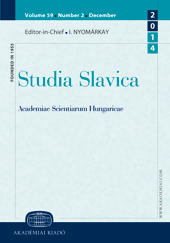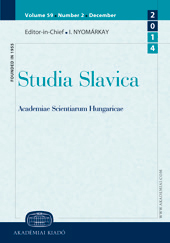
Maďarské lexikálne prvky v českom slovníku Juraja Palkoviča
The Slovak evangelical priest Juraj Palkovič (Georg Palkowitsch), who worked as a professor in Bratislava, collected 240 loanwords borrowed from Hungarian or through Hungarian mediation in his two-volume dictionary published in 1820 and 1821 as a Czech language edition. His work reflects the language situation of Slovak evangelical people living in Hungary in the 18th and 19th centuries.
More...
